Grant Scott
Heartbeat Detection from Ballistocardiogram using Transformer Network
Dec 18, 2024Abstract:Longitudinal monitoring of heart rate (HR) and heart rate variability (HRV) can aid in tracking cardiovascular diseases (CVDs), sleep quality, sleep disorders, and reflect autonomic nervous system activity, stress levels, and overall well-being. These metrics are valuable in both clinical and everyday settings. In this paper, we present a transformer network aimed primarily at detecting the precise timing of heart beats from predicted electrocardiogram (ECG), derived from input Ballistocardiogram (BCG). We compared the performance of segment and subject models across three datasets: a lab dataset with 46 young subjects, an elder dataset with 28 elderly adults, and a combined dataset. The segment model demonstrated superior performance, with correlation coefficients of 0.97 for HR and mean heart beat interval (MHBI) when compared to ground truth. This non-invasive method offers significant potential for long-term, in-home HR and HRV monitoring, aiding in the early indication and prevention of cardiovascular issues.
Deep Morphological Hit-or-Miss Transform Neural Network
Dec 04, 2019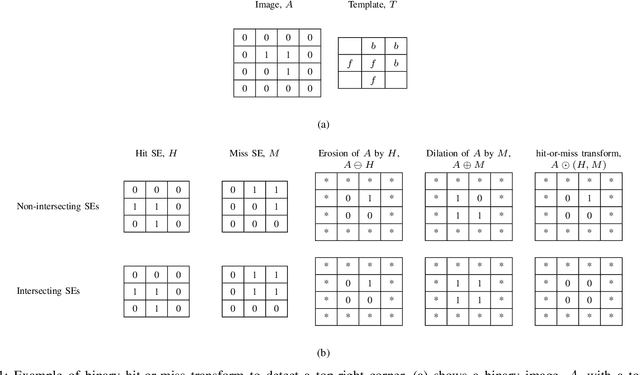

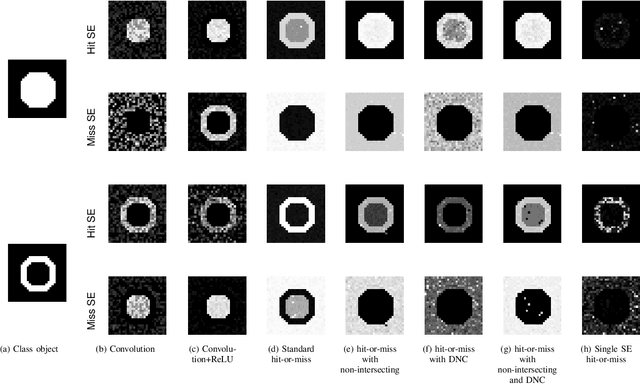
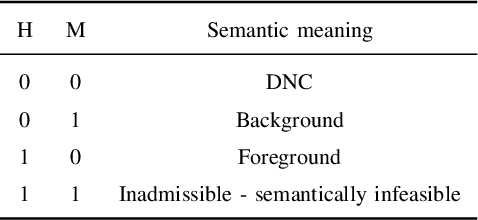
Abstract:Neural networks have demonstrated breakthrough results in numerous application domains. While most architectures are built on the premise of convolution, alternative foundations like morphology are being explored for reasons like interpretability and its connection to the analysis and processing of geometric structures. Herein, we investigate new deep networks based on the morphological hit-or-miss transform. The hit-or-miss takes into account both foreground and background when measuring the fitness of a target shape in an image. We identify limitations of current hit-or-miss definitions, and we formulate an optimization problem to learn the transform. Our analysis shows that convolution, in fact, acts like a hit-miss transform through semantic interpretation of its filter differences. Analogous to the generalized hit-or-miss transform, we also introduce an extension of convolution and show that it outperforms conventional convolution on benchmark data sets. We conducted experiments on synthetic and benchmark data sets, and we show that the direct encoding hit-or-miss transform provides better interpretability on learned shapes consistent with objects whereas our morphologically inspired generalized convolution yields higher classification accuracy.
Enabling Explainable Fusion in Deep Learning with Fuzzy Integral Neural Networks
May 10, 2019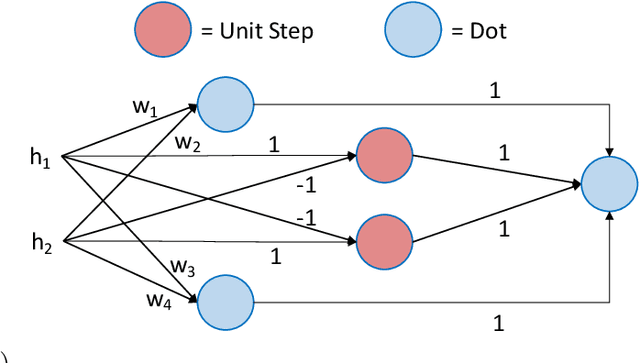
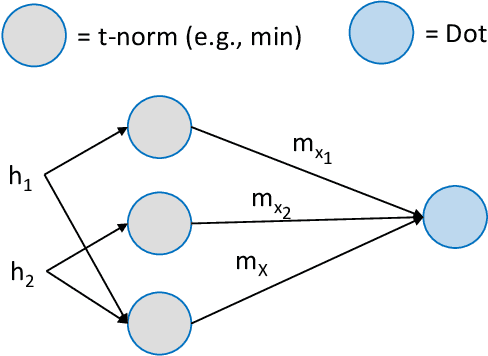
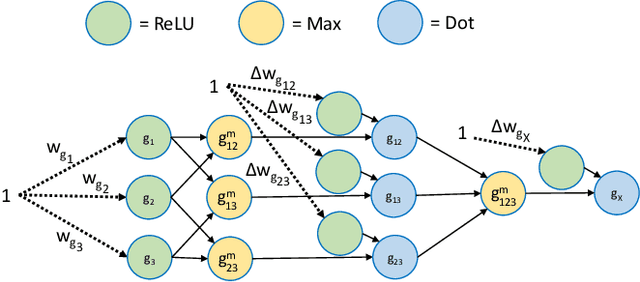
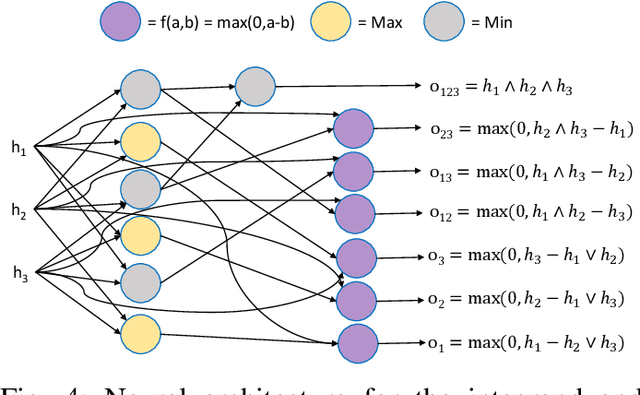
Abstract:Information fusion is an essential part of numerous engineering systems and biological functions, e.g., human cognition. Fusion occurs at many levels, ranging from the low-level combination of signals to the high-level aggregation of heterogeneous decision-making processes. While the last decade has witnessed an explosion of research in deep learning, fusion in neural networks has not observed the same revolution. Specifically, most neural fusion approaches are ad hoc, are not understood, are distributed versus localized, and/or explainability is low (if present at all). Herein, we prove that the fuzzy Choquet integral (ChI), a powerful nonlinear aggregation function, can be represented as a multi-layer network, referred to hereafter as ChIMP. We also put forth an improved ChIMP (iChIMP) that leads to a stochastic gradient descent-based optimization in light of the exponential number of ChI inequality constraints. An additional benefit of ChIMP/iChIMP is that it enables eXplainable AI (XAI). Synthetic validation experiments are provided and iChIMP is applied to the fusion of a set of heterogeneous architecture deep models in remote sensing. We show an improvement in model accuracy and our previously established XAI indices shed light on the quality of our data, model, and its decisions.
 Add to Chrome
Add to Chrome Add to Firefox
Add to Firefox Add to Edge
Add to Edge